Calgary Transit then and now – old Shouldice Bridge – John Hextall Bridge
About a hundred years separate the two images seen in this report. Both show the old Shouldice Bridge (now the John Hextall Bridge) in the community of Bowness in western Calgary. In the first picture, a tram, with two proud crewmen posing for the camera, can be seen in front of the structure. In the second photo we can see how the bridge looks today – it’s used by pedestrians and bicyclists now and the old streetcars are a distance memory.
The bridge was built in 1910 and crosses the Bow River. Built by promoter John Hextall, it was put in place to connect the city of Calgary (then some distance away) with his new planned community, called Bowness. That dream never materialized, in Hextall’s lifetime anyway, and it was not until the 1940s before any serious development took place in the community. Then it was in the sticks, today it’s just another neighbourhood surrounded by many others.
Shortly after the bridge was built, the Calgary Municipal Railway, predecessor to the present day Calgary Transit System, saw an opportunity and bought the structure. They planned a large riverside park in Bowness and would use the bridge to access it. It was common at the time for a transit system to build and operate a “Trolley Park” and this was done to bring in additional income and to better utilize the streetcar system on those slower weekends. Bowness Park was a popular attraction then as it is today. Those visiting it today arrive by car or bus…mostly car…this is Calgary after all.
From the start the bridge was also used by vehicular traffic and continued in that capacity until the mid-1980s when a new replacement bridge was built right beside it. Known as the (new) Shouldice Bridge, it is just to the right of my position, off camera.
It’s surprising that the old structure lasted as long as it did in service. It is clearly well built but is horribly narrow and and there must have been many close calls as cars passed each other. I bet a few side mirrors got broken. It was technically two lanes wide…I guess. I don’t know how the transit buses made it through if there was oncoming traffic.
When built it was briefly known as the Bowness Bridge. That community, remember we spoke about it earlier, is located directly to the west – to the east, by the way, is present day Montgomery. Later it was known as the Shouldice Bridge after a local land owner. Finally, in the 1980s, the name was changed to the current one, the John Hextall Bridge, in honour of its builder. Odd that it was not called that from the beginning. The last streetcar to pass over it was in 1950.
Once the new Shouldice Bridge was built beside it, the old Shouldice/Hextall Bridge went into semi-retirment, finding a new use as an essential component of the extensive Calgary pathways system. It links the network on one side of the river with the other, and on any given day you’ll see lots of walkers, joggers and cyclists using it to cross over.
A builder’s plaque on the bridge (top, centre, modern picture) shows it was made in Winnipeg Manitoba by the Algoma Steel Bridge Company. That firm supplied several of the bridges used in early day Calgary and aside from this one, three others of a similar look exists today. They are all found in the community of Inglewood just east of downtown and all date from 1908-1911. This plaque is not seen in the original photo, begging the question, where was it? Is it a modern addition?
This bridge seems to have survived the disastrous spring 2013 floods well. I looked it over and saw no obvious damage.
Note how some elements of the bridge differ from the old picture to the new. Some struts (top cross beams) and braces are missing or look different as do some of the diagonals and verticals (side posts). This of course suggests that at some point the structure was rebuilt. And of course there us that plaque mentioned earlier. Where was it back then?
The streetcar seen, #18, was built in 1910 by the Preston Car Company of Preston (now Cambridge) Ontario. This builder supplied many street cars to the Calgary Municipal Railway and many other transit systems in Canada as well. As built, it was a two man car. You entered in the back, paid the conductor (seen standing on the far platform) and then when existing at your stop, you did so through the front door. The dapper fellow seen in front is the motorman. He “drove” the streetcar.
Around the time time of World War One, this car, and all others in the fleet, were converted to one man operation. That it’s still a two man car, helps us date the original image.
At times, the volume of people visiting Bowness Park was so great that some streetcars were outfitted with a trailer.
If you look close you can see a number of passengers inside the car, including one standing behind the conductor in back (hard to see). That “thing” seen on the front was to catch a person and prevent them from being run over should they step in front of the car when it was moving.
The Calgary streetcar system was closed down in 1950. Car #18 was retired the year before, just shy of its fortieth birthday.
The old image is from a scanned postcard. Thanks for sending it Molly. It’s undated but given that the streetcar is in the older two man configuration means it’s likely from the period 1912 (when the Bowness line was put in place) to sometime around 1916 (when two man operation ended).
Note the old advertisements seen on the fence to the right of the car. One is for Tetley’s Tea and another promotes a cattle and horse auction.
If you have an old postcard where you’d like us to revisit the spot seen in it to check out what things looks like today and then document it on this blog, by all means send it to us. Contact information can be found below.
Check out these other transit themed then and now posts…
Calgary Transit then and now – The Bay.
Edmonton Transit then and now – Northlands Coliseum – Rexall Place.
Calgary Transit then and now – 14th St SW trolley bus.
If you’d like to know more about what you’ve seen here, by all means contact us!
Date: March, 2014.
Location: Calgary, AB.
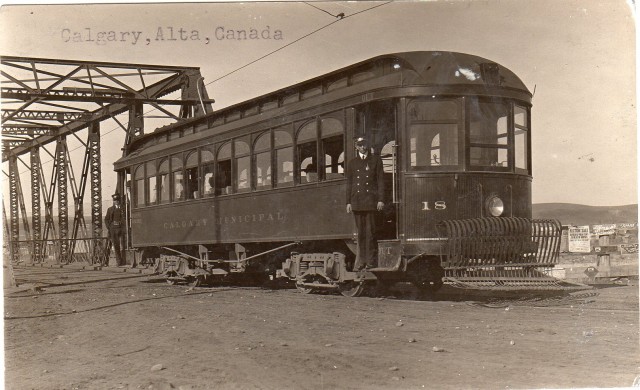
Calgary Transit streetcar #18 on the old Shouldice Bridge.
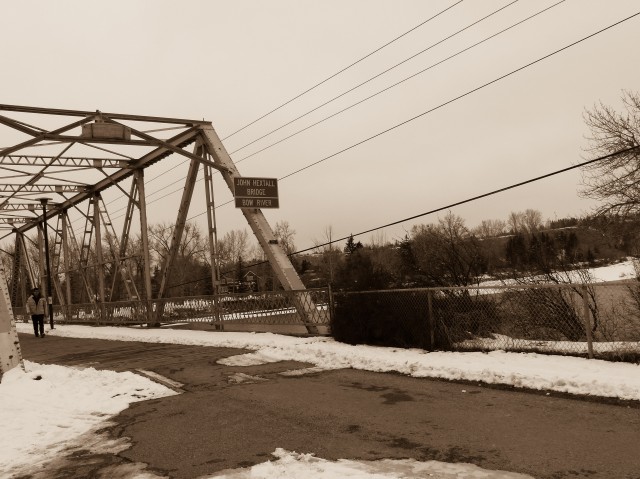
Today it’s known as the John Hextall Bridge and is for pedestrian use only.

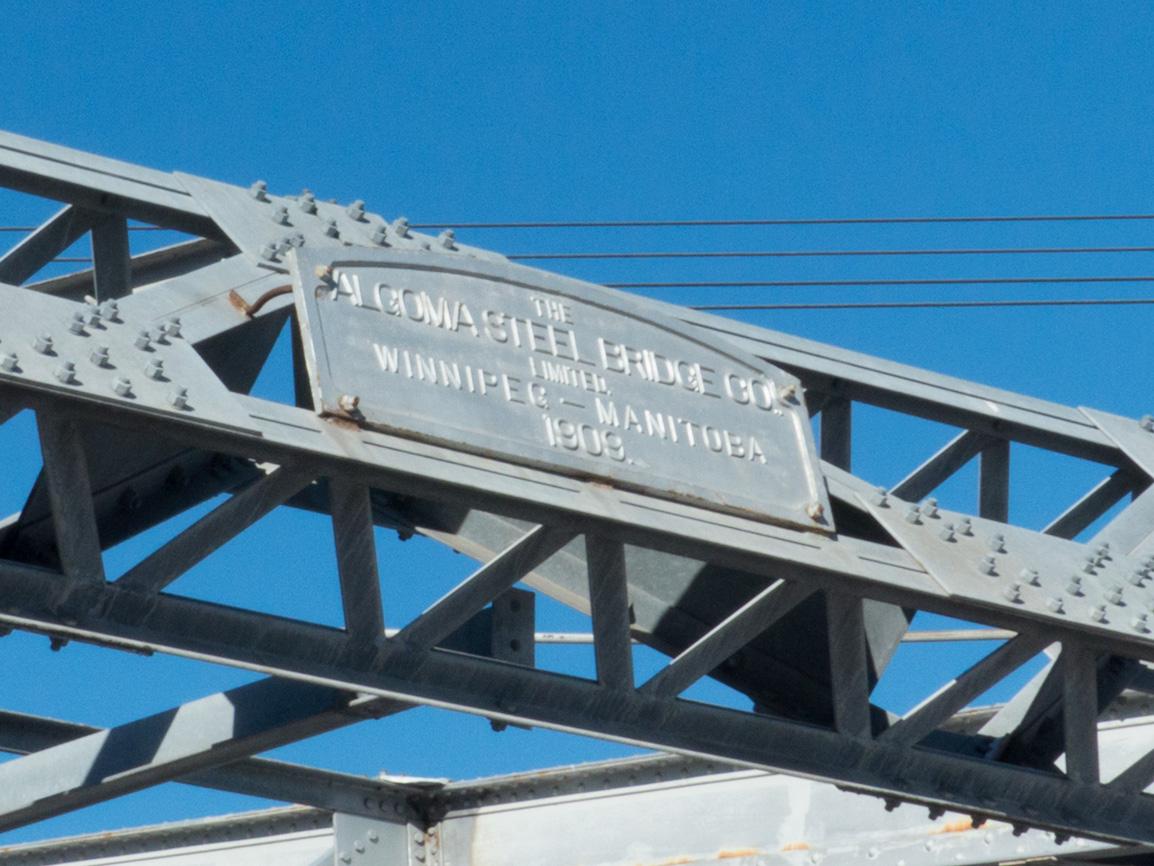
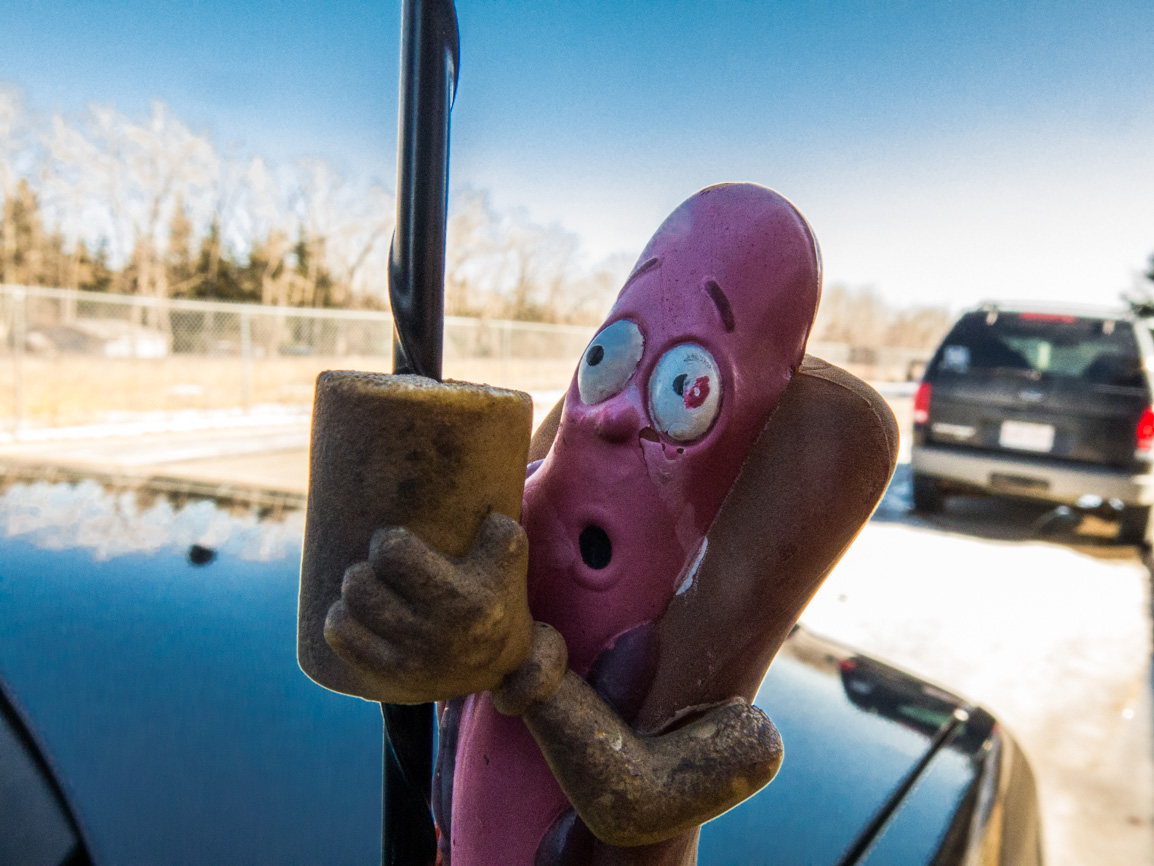
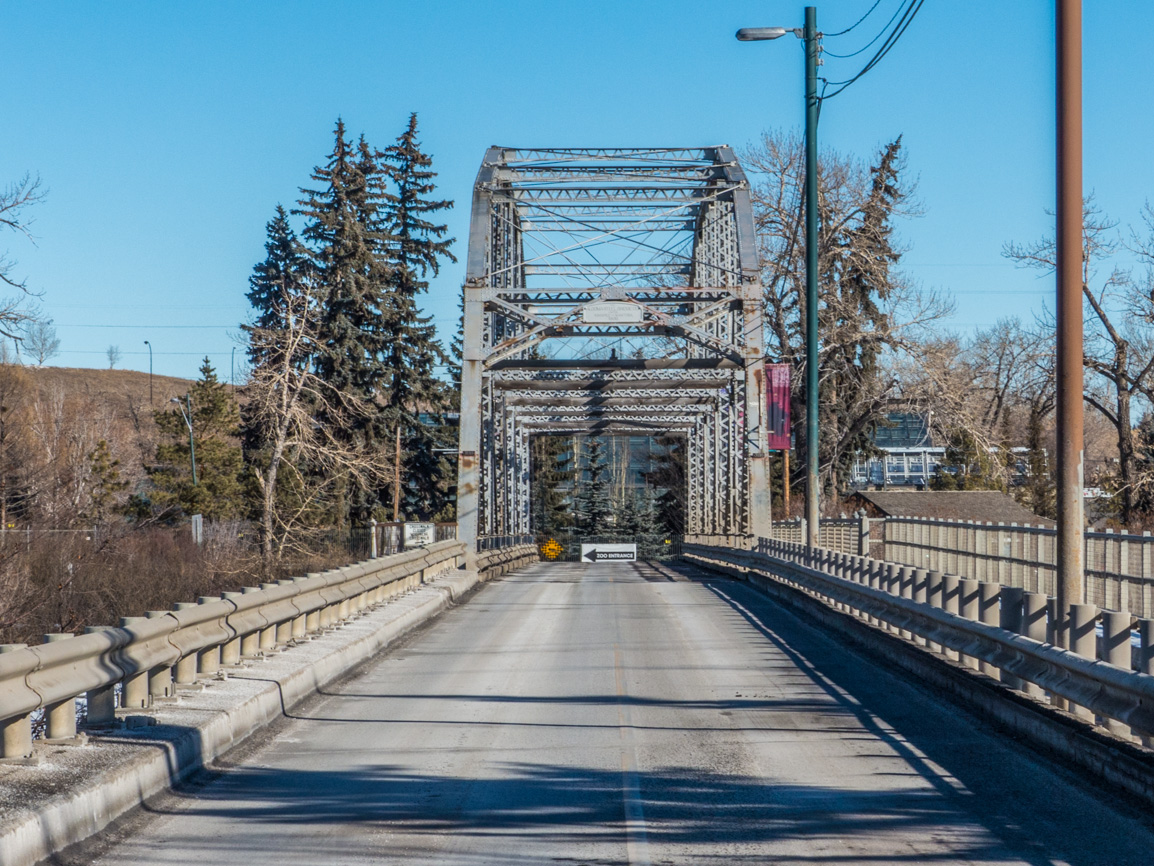
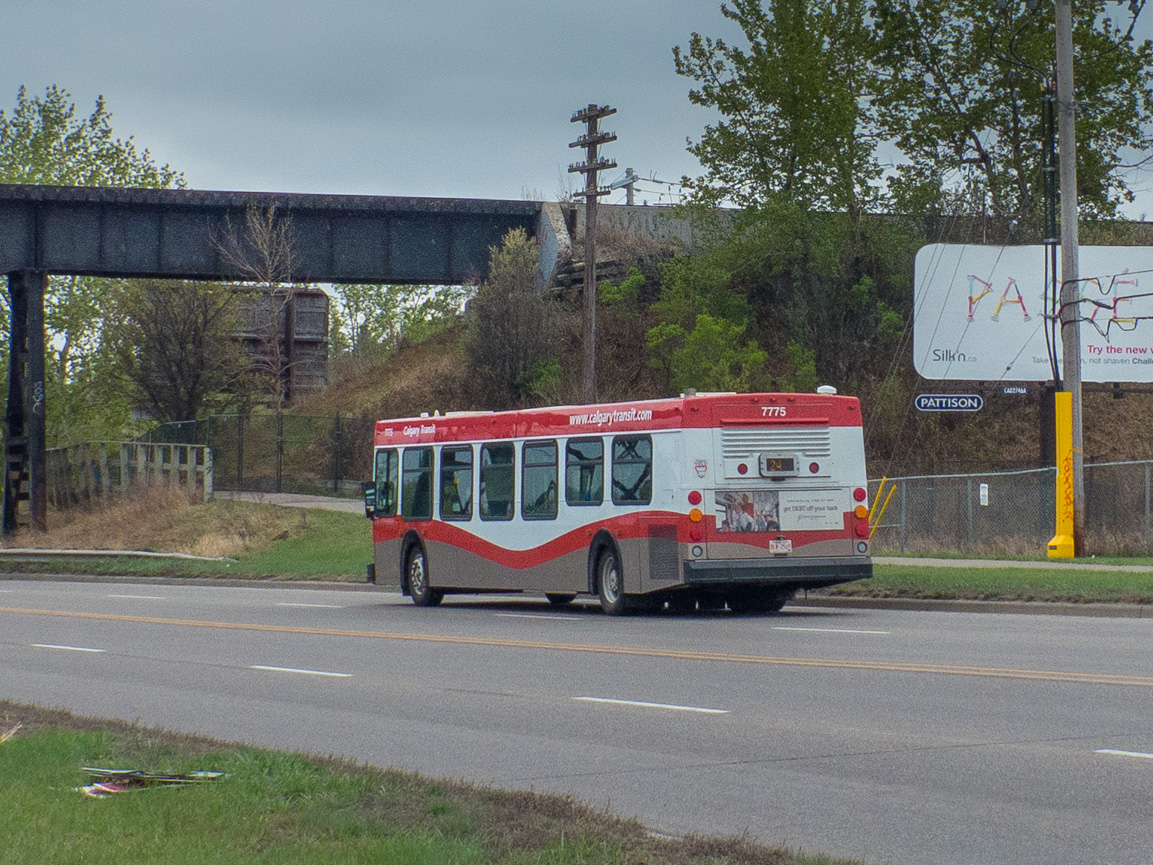
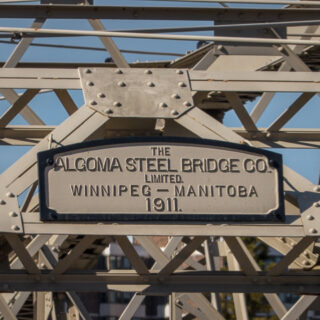
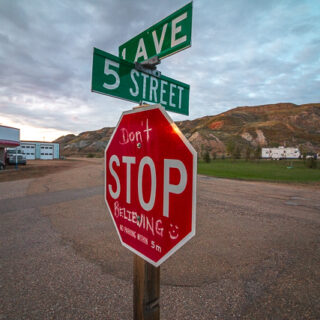
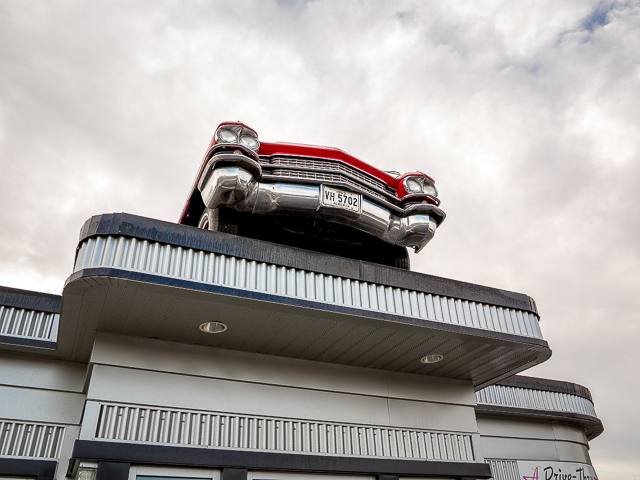
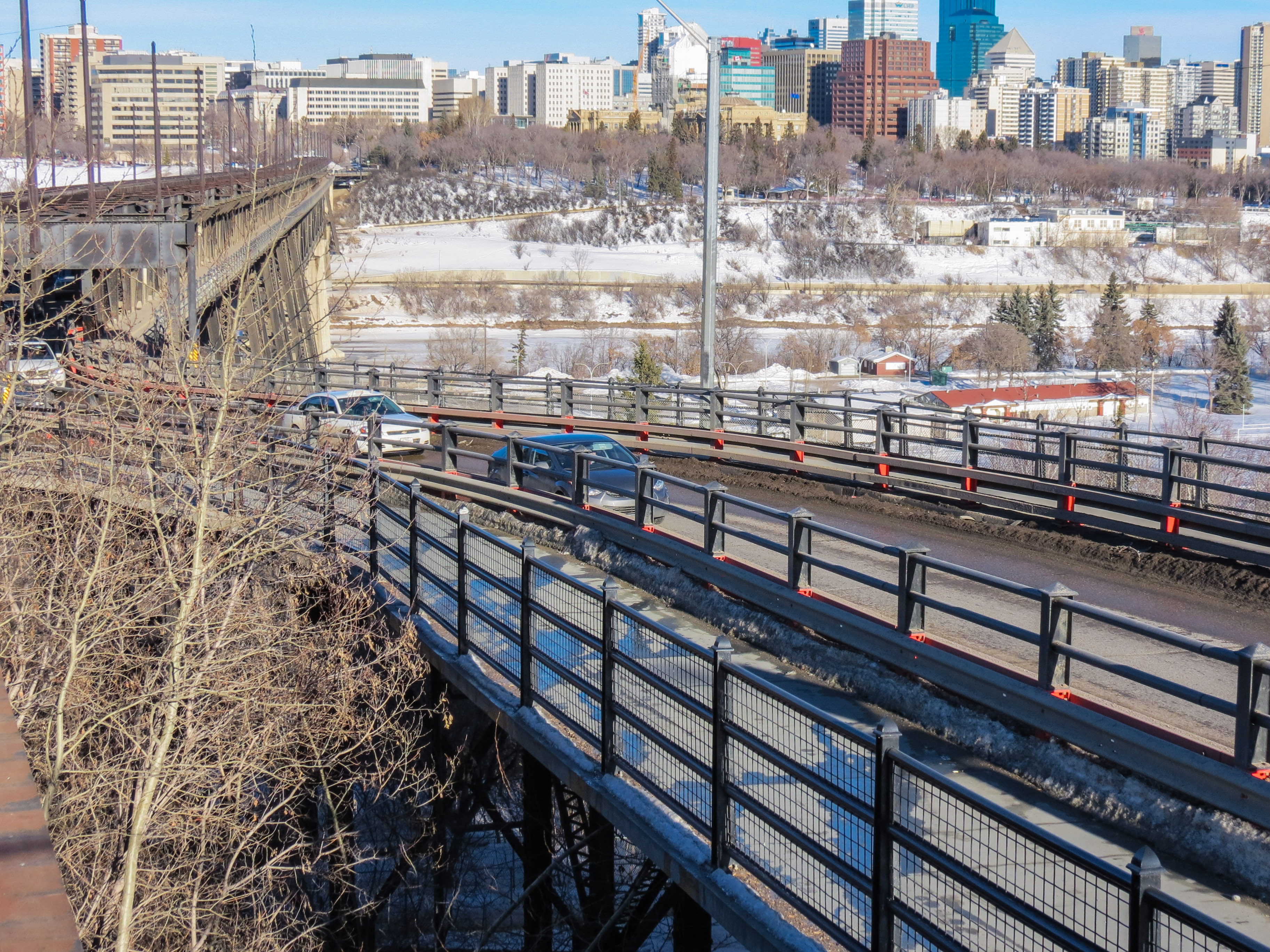
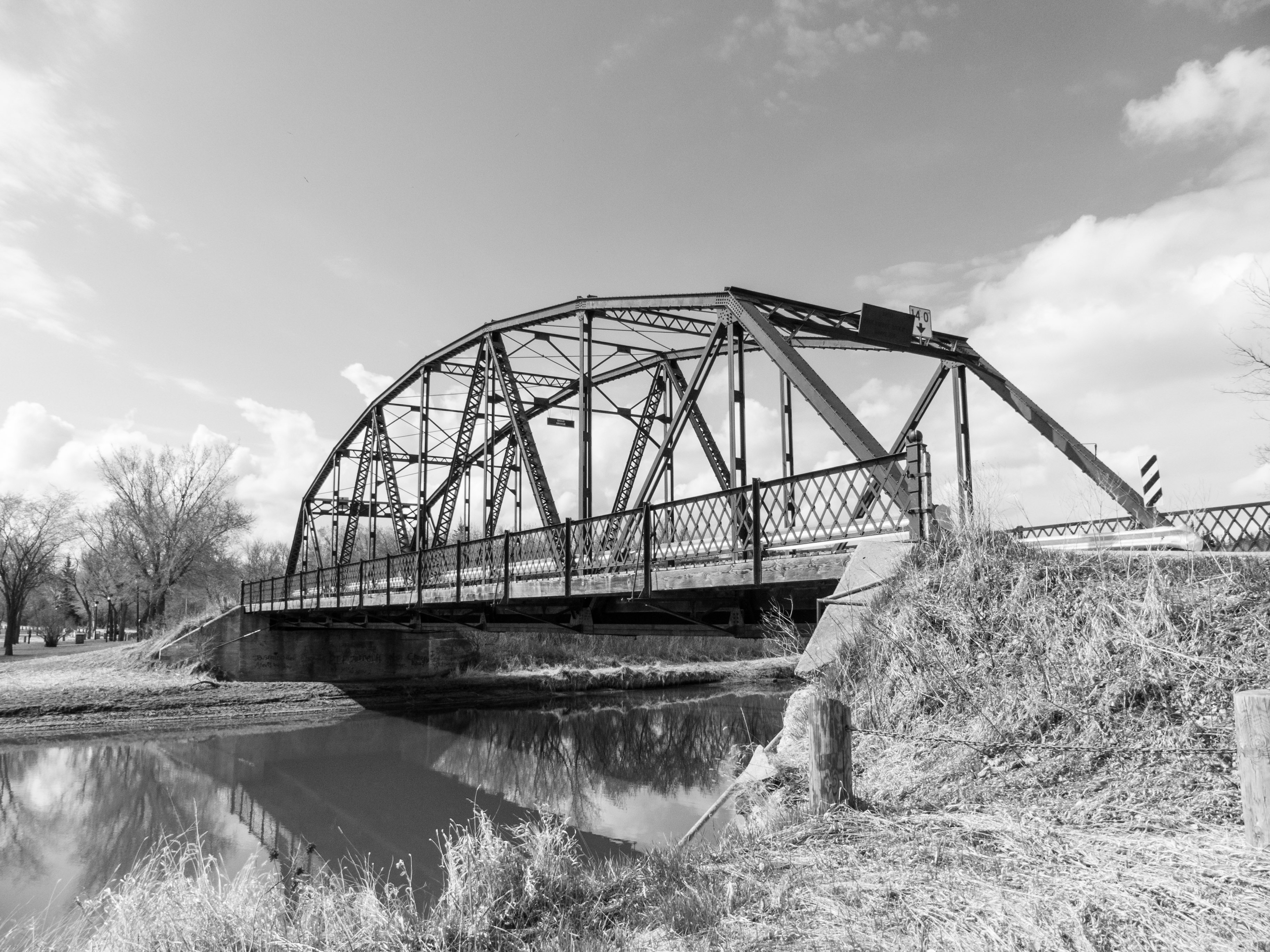
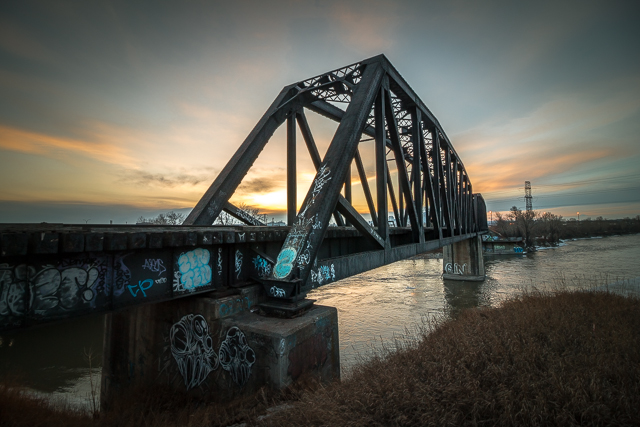
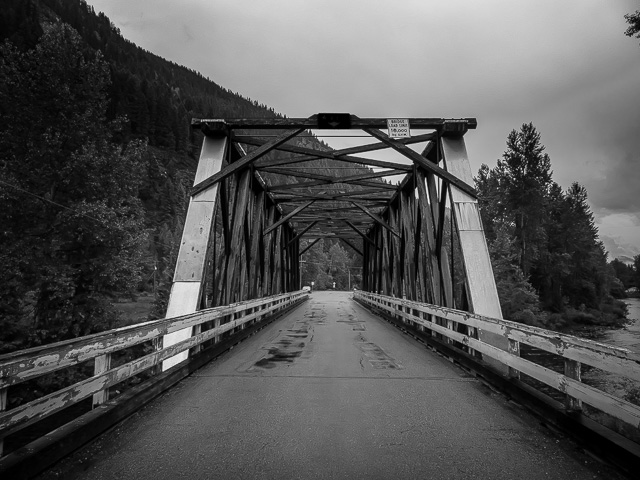
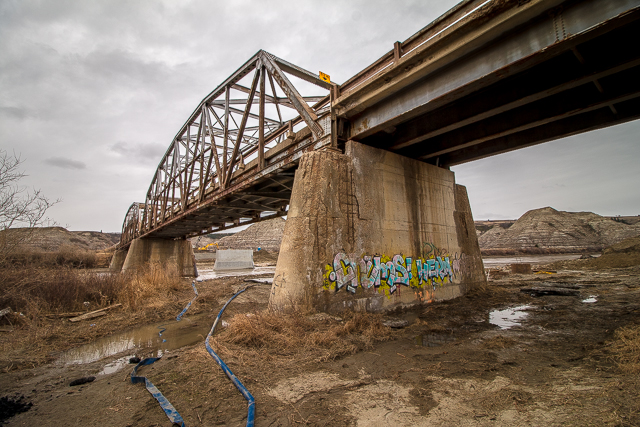







As to transit buses, two could not pass on the bridge. There was room (just) for a transit bus and a car, but not two buses. Buses had to be careful approaching the bridge from the east, because they couldn’t see east-bound buses around the bend just to the NW of the bridge. A bus in front of your car might suddenly stop abruptly at the east end of the bridge to allow a bus from the west to cross.
I moved to Bowness in 1957, lived just a few blocks from the bridge. At that time, the streetcar tracks had still not been removed from the bridge, just paved around and over.
Awesome, thank you for sharing this! It’s a tight fit on that bridge for sure.
More than a few side mirrors met their doom on that bridge. I was a parts gopher for a few different dealerships and frequently used that bridge. Along both sides were glittery pieces of busted mirrors. I never lost one myself, but oncoming traffic always made for an exciting experience.
No doubt! And same story at the old zoo bridge too. So many mirrors lost. Thanks for commenting!
The Zoo bridge was great for sitting in summer traffic jams on the way back from the southeast industrial area to the Dodge dealer in Marlborough. Much more pleasant than being stuck on Blackfoot Trail next to the stockyards. And took about the same time, too!
Never lost a mirror there either. I’m pretty sure Shouldice bridge was narrower though.
I kinda miss the old Zoo Bridge. The current structure seems so character-less. The Zoo and Shouldice Bridges were very similar (same builder too and same era) and if different widths, I don’t think it’d be by much. Thanks for commenting.
I noticed the Cow catcher on the front of the Tram;)
I remember growing up in Montgomery that there were a lot collisions
on the old bridge.
I bet it could catch an elephant! I’ve heard the bridge was a high accident spot. Not surprising I guess given how narrow it is.
I live in Montgomery and during the flood the water almost reached the deck of the bridge.
It seems to have survived the barrage of water unscathed.